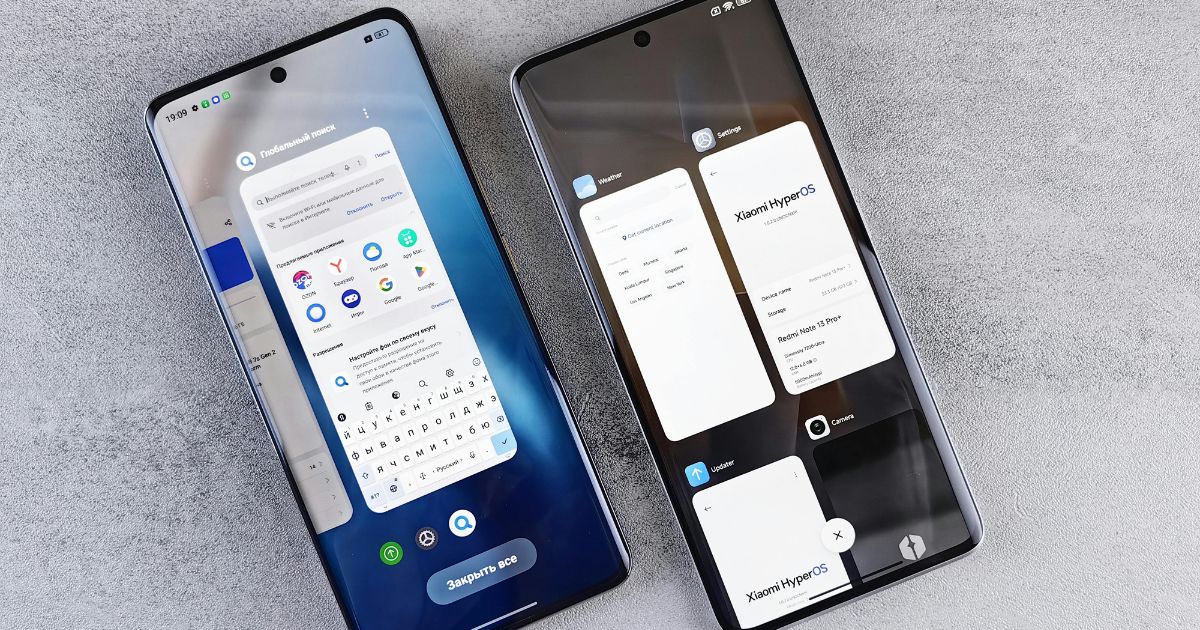In the dynamic landscape of application development, concerns about vulnerabilities loom large, particularly regarding the security of user data. As businesses embark on the journey of creating new applications, ensuring robust defenses against potential threats becomes paramount.
In this article we’ll explore application data security standards and explain how businesses can utilize best practices to ensure the security of their applications.
What is Data Security?
Data security refers to the comprehensive set of measures and protocols implemented to safeguard sensitive information from unauthorized access, disclosure, alteration, or destruction. In the context of building new apps, data security is paramount in ensuring the protection and integrity of the data handled by the application. It encompasses a multifaceted approach, combining technological, organizational, and procedural elements to create a robust defense against potential threats.
Technological components involve encryption, authentication mechanisms, and secure coding practices to fortify the digital infrastructure. Organizational aspects include defining clear roles and responsibilities, conducting regular security audits, and promoting a culture of awareness among personnel. Procedural measures involve the establishment of policies and guidelines governing data handling, incident response, and compliance with relevant regulations.
In the landscape of new app development, data security addresses the concerns of vulnerabilities by fortifying the application against cyber threats and unauthorized access. As digital ecosystems evolve, data security remains a cornerstone in fostering user trust, safeguarding sensitive information, and ensuring the longevity and reliability of the developed applications.
The Importance of a Data Security Policy
A data security policy is pivotal in establishing a structured framework for safeguarding sensitive information within an organization. This policy serves as a guiding document that outlines the principles, procedures, and responsibilities concerning data protection. In the context of new app development, a well-crafted data security policy is instrumental in mitigating vulnerabilities and ensuring compliance with regulatory standards.
This policy not only defines access controls, encryption protocols, and data handling practices but also fosters a culture of awareness among employees. It sets the tone for the organization's commitment to data security, providing a roadmap for proactive risk management and incident response. A robust data security policy not only bolsters the defense against potential threats but also instills confidence in users, partners, and stakeholders, crucial for the success and trustworthiness of newly developed applications.
Aspects of Application Data Security
As we've seen thus far, ensuring the security of one's application data is of utmost importance in the world of app development. Three key aspects serve as the linchpin for preventing potential vulnerabilities. From safeguarding sensitive information to ensuring the trustworthiness of an application's code, these aspects collectively form a robust defense, mitigating risks and fostering a secure digital environment. Let's delve into each facet to understand their critical role in fortifying applications against potential threats.
User Data
Security of user data is a critical aspect of application security, focusing on protecting the information collected from and about users. This includes personally identifiable information (PII), login credentials, and any data that users input into the application. Ensuring the confidentiality, integrity, and availability of user data is paramount to building trust and maintaining regulatory compliance.
Consider a mobile banking application. User data in this context includes sensitive details such as account numbers, transaction history, and personal identification information. To secure user data, the application employs end-to-end encryption for communication, tokenization for storing sensitive information, and strict access controls. Regular security audits and compliance with data protection regulations like GDPR or HIPAA are also part of the strategy to safeguard user data.
Application Integrity
Application integrity involves measures to guarantee that the application's code, data, and overall structure remain unaltered and trustworthy. Protecting the integrity of the application is essential to prevent unauthorized modifications that could compromise its functionality, introduce vulnerabilities, or lead to malicious activities.
Imagine an e-commerce platform that relies on a web application. To ensure application integrity, the development team implements code signing to verify the authenticity of the software. Regular code reviews, version control systems, and automated integrity checks further contribute to maintaining the application's trustworthiness. Any unauthorized changes trigger alerts, and a robust rollback mechanism is in place to restore the application to a known, secure state.
User Access Security
User access security is concerned with controlling and managing user permissions to access various parts of the application and its data. This aspect aims to prevent unauthorized users from gaining inappropriate access to sensitive information, ensuring that only authorized individuals can interact with specific features or data sets.
Consider a healthcare management system where various personnel require different levels of access. A doctor needs access to patient medical records, a nurse requires access to treatment plans, and administrative staff needs access to billing information. User access security in this scenario involves implementing role-based access controls (RBAC) to assign permissions based on job roles. Multi-factor authentication adds an extra layer of security, ensuring that even if credentials are compromised, unauthorized access is significantly more challenging.
How Different Aspects of Application Data Security Work Together
In an interconnected digital landscape, the previously mentioned aspects of application data security work in tandem to create a comprehensive defense against vulnerabilities. For instance, a secure user access mechanism (User Access Security) ensures that only authorized individuals interact with the application, limiting potential threats. Simultaneously, protecting the integrity of the application's code and data (Application Integrity) prevents unauthorized alterations that could compromise user data. The overarching goal is to establish a robust ecosystem where user data is secure, the application remains trustworthy, and access is controlled and monitored.
To reinforce these aspects, organizations often institute a combination of technical solutions and best practices. This includes continuous monitoring, regular security audits, employee training on security protocols, and adherence to industry-specific compliance standards. Collaborating with cybersecurity experts, staying abreast of emerging threats, and implementing the latest security technologies are integral to adapting to the evolving landscape of application data security.
Therefore, a holistic approach to application data security is indispensable in addressing the concerns of vulnerabilities during new app development. User data protection, application integrity, and user access security collectively form a formidable defense, instilling confidence in users and stakeholders while meeting the stringent demands of data protection regulations.
As the digital realm continues to advance, prioritizing these aspects ensures that the foundation of application development is resilient, secure, and adaptable to emerging cybersecurity challenges.
Mobile App Security Best Practices to Ensure App Integrity
Ensuring the integrity of your application is paramount for maintaining user trust and safeguarding sensitive data. App integrity involves protecting the app's code, data, and overall structure from unauthorized access or modification. Implementing robust security best practices is crucial. Let's delve into five key best practices to ensure app integrity.
Encryption
Encryption is the process of converting data into a secure format that can only be deciphered with the appropriate key. In the context of mobile apps, this is instrumental in protecting data both at rest and in transit. Robust encryption algorithms, such as AES (Advanced Encryption Standard), are widely adopted for securing sensitive information.
Here is how encryption is typically implemented:
- Data at rest: encryption is utilized to protect data stored on the device. For example, it is advisable to encrypt local databases or sensitive files to ensure that even if a device is compromised, the data remains unreadable.
- Data in transit: secure communication channels are implemented using protocols like HTTPS to encrypt data during transmission between the app and external servers. SSL/TLS certificates play a vital role in establishing a secure connection.
Here are some considerations to keep in mind:
- Encryption algorithms should be regularly updated to stay ahead of evolving threats.
- Strong and unique encryption keys should be employed for added security.
Authentication
Authentication verifies the identity of users and ensures that only authorized individuals gain access to the app's functionalities. Proper authentication mechanisms are fundamental for preventing unauthorized access and protecting user accounts.
Here is how authentication is typically implemented:
- It is advisable to implement strong password policies, including requirements for complexity, length, and regular updates.
- Biometric authentication methods such as fingerprint or facial recognition for enhanced user verification can be incorporated.
- Multi-factor authentication (MFA) should be enabled to add an extra layer of security, requiring users to provide multiple forms of identification.
Here are some considerations to keep in mind:
- Authentication processes should be regularly audited and updated to address emerging threats.
- Users should be educated about the importance of strong authentication practices.
Authorization
Authorization determines the actions or data a user is permitted to access within the app. It builds on authentication by ensuring that once a user is authenticated, they only have access to the functionalities and data appropriate for their role.
This is how authorization is typically implemented:
- Role-based access controls (RBAC) are utilized to assign specific permissions based on user roles.
- Least privilege principles are implemented to grant users the minimum level of access required to perform their tasks.
- Regularly review and update user permissions, revoking unnecessary access.
Here are some considerations to keep in mind:
- User activity should be monitored and logged to detect and respond to unauthorized access attempts.
- Fine-grained access controls can be implemented to specify granular permissions within roles.
Communication Protocols
Mobile apps often communicate with external servers or APIs, making secure communication protocols essential. Insecure communication channels can expose sensitive data to interception and manipulation.
Here is how communication protocols are typically implemented:
- HTTPS are employed to secure data transmitted between the mobile app and backend servers.
- The use of deprecated or insecure protocols are avoided, as they lack encryption and leave data vulnerable to interception.
- Certificate pinning is implemented to ensure that the app only communicates with trusted servers.
Here are some considerations to keep in mind:
- SSL/TLS protocols must be regularly updated to stay abreast of security standards.
- Security of third-party APIs should be monitored and assessed to prevent potential vulnerabilities.
Data Storage
How an app stores data locally on a device is crucial for maintaining its integrity. Secure data storage practices prevent unauthorized access and protect user information.
This is how data storage implementation typically works:
- Sensitive data that is stored on the device is encrypted. This can include user credentials or locally cached information.
- Secure key management systems are utilized to protect encryption keys and prevent unauthorized access.
- Secure coding practices are implemented to avoid vulnerabilities that could expose stored data.
Here are some considerations to keep in mind:
- Data storage mechanisms should be regularly audited and updated to address emerging threats.
- Developers should be educated on secure coding practices to mitigate potential vulnerabilities.
By meticulously implementing these mobile app security best practices, developers can fortify the integrity of their applications. These measures not only protect against unauthorized access and data breaches but also contribute to building a foundation of trust with users. In the ever-evolving landscape of mobile app security, staying proactive and adopting a multi-layered approach ensures that applications remain resilient against emerging threats.
Final Thoughts on Upholding Application Data Security Standards
Upholding robust application data security standards is not just a regulatory necessity but a fundamental commitment to user trust and the longevity of your application. As we navigate the complexities of mobile app development, the significance of safeguarding user data, ensuring application integrity, and controlling user access becomes increasingly apparent.
By integrating cutting-edge security measures such as encryption, authentication, authorization, secure communication protocols, and meticulous data storage practices, developers fortify their applications against potential vulnerabilities. The synergy of these elements creates a resilient defense mechanism, reassuring users and stakeholders that their data remains confidential and secure.
As technology advances, so do the tactics of cyber threats. Embracing a proactive stance, staying informed about emerging risks, and fostering a security-conscious culture within development teams are essential. Upholding application data security standards is not a one-time task but an ongoing commitment to adaptability and resilience in the face of evolving challenges. Ultimately, by prioritizing data security, developers not only meet regulatory requirements but also instill confidence, laying the foundation for successful, trustworthy, and secure applications.








